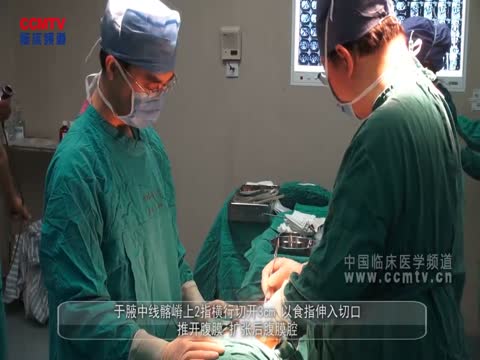维生素D缺乏 :每日补充800 IU可纠正
旧金山——根据美国医师协会(ACP)2013年会上报告的一项研究,维生素D缺乏的绝经后白人妇女以800 IU/d的剂量补充维生素D3持续1年,可将血清维生素D提高至可接受的水平,600 IU/d的剂量可能也有效。
这是首项比较多种剂量维生素D补充剂的长期、随机、双盲、安慰剂对照研究,研究者为加州洛玛连达大学的Adarsh J. Sai医生等人。在研究开始时,受试者的平均年龄为67岁,平均体重指数(BMI)为30 kg/m2,平均血清25-羟维生素D水平为15 ng/ml。本研究未纳入有严重合并症、活动性肾结石疾病或体重指数>45 kg/m2的女性,以及服用任何可能干扰骨代谢或维生素D代谢的药物的女性。受试者25-羟维生素D的初始血清水平>5 ng/ml。世界卫生组织和医学研究所认为正常水平应该在20 ng/ml以上(或>50 nmol/L),不过2011年内分泌学会指南将正常水平界定为30 ng/ml以上。

Adarsh J. Sai医生
在本研究中,受试者被随机分组,每日补充安慰剂或以下剂量的维生素D3:400、800、1,600、2,400、3,200、4,000或4,800 IU/d,同时还根据7天食物日记补充柠檬酸钙,以将每日钙摄入量增至1,200~1,400 mg/d。
800 IU剂量是使至少98%的人血清维生素D水平维持正常的当前推荐膳食供给量。在该剂量组有98%的女性血清25-羟维生素D水平增至20 ng/ml以上。但一项模型分析预测,600 IU的剂量 也能达到相同的血清水平,不过本研究未对该剂量进行检测,该剂量对维持正常血清水平是否足量尚需通过前瞻性试验加以验证。在研究期间,有94%的患者坚持补充维生素D,有91%坚持补钙。在补充1年后,31名BMI正常女性的血清25-羟维生素D水平高于65名超重女性及76名肥胖女性。体重正常女性的血清25-羟维生素D水平较超重者高5 ng/ml,较肥胖者高7 ng/ml。血清甲状旁腺素水平随着维生素D剂量增加而下降。9%的患者出现高钙血症,33%发生高钙尿。没有受试者发生肾结石。
联合服用维生素D和钙的长期安全性尚有待斟酌,但应该注意的是,妇女健康行动研究显示,在约40,000名联合服用400 IU维生素D+2,000 mg钙的妇女中,肾结石的发生率增加约20%。
本研究由美国国立衰老研究所资助。Sai医生无利益冲突披露。
爱思唯尔版权所有 未经授权请勿转载
By: SHERRY BOSCHERT, Internal Medicine News Digital Network
SAN FRANCISCO – Taking 800 IU/day of vitamin D3 supplements for 1 year pushed serum levels into acceptable ranges in 98% of postmenopausal white women with vitamin D insufficiency, and 600 IU/day may work just as well, a study of 163 patients found.
The study was the first long-term, randomized, double-blind placebo-controlled comparison of multiple dosages of vitamin D supplements, Dr. Adarsh J. Sai and his associates reported at the annual meeting of the American College of Physicians. Many trials of vitamin D supplementation in osteoporotic women studied mainly single dosages.
Participants started out with serum levels of 25 hydroxyvitamin D, or 25-(OH)D, greater than 5 ng/mL but less than 20 ng/mL. The World Health Organization and Institute of Medicine consider normal levels to be above 20 ng/mL(or greater than 50 nmol/L), although the 2011 Endocrine Society guidelines define normal as above 30 ng/mL, he said.
The study randomized participants to daily supplementation with placebo or one of seven doses of vitamin D3: 400, 800, 1,600, 2,400, 3,200, 4,000, or 4,800 IU/day. They also received calcium citrate supplements based on a 7-day food diary to increase daily calcium intake to 1,200-1,400 mg/day (Ann. Intern. Med. 2012;156:425-37).
Serum 25-(OH)D levels increased to above 20 ng/mL in 98% of women on the 800-IU dose, which is the current recommended dietary allowance of vitamin D to maintain normal serum levels in at least 98% of people, he said. A 600-IU dose, however, could achieve the same blood levels, a modeling analysis predicted, though that dose was not provided to women in the study, said Dr. Sai of Loma Linda (Calif.) University.
Prospective trials are needed to confirm whether 600 IU/day would be sufficient supplementation, he said.
After a year of supplementation, serum 25-(OH)D levels were higher in the 31 women with a normal body mass index (BMI), compared with the 65 overweight women or 76 obese women. The normal-weight women’s serum 25-(OH)D levels were 5 ng/mL higher than those of the overweight women and 7 ng/mL higher than those of the obese women.
Serum parathyroid hormone levels decreased with increasing doses of vitamin D. Hypercalcemia occurred in 9% of patients, and hypercalciuria developed in 33%. No patients developed kidney stones.
"The long-term safety of vitamin D combined with calcium needs to be considered," Dr. Sai said at the meeting. "As a reminder, in the Women’s Health Initiative study of approximately 40,000 women on vitamin D 400 IU plus calcium 2,000 mg, the kidney stones incidence increased by about 20%."
At the start of the study, patients had a mean age of 67 years and a mean body mass index of 30 kg/m2. The mean serum 25-(OH)D level was 15 ng/mL. During the study, a mean of 94% of patients adhered to vitamin D supplementation, and 91% adhered to calcium supplementation.
The study excluded women with significant comorbidities, active kidney stone disease, or a body mass index greater than 45 kg/m2, and women taking any medications that could interfere with bone or vitamin D metabolism.
The National Institute on Aging funded the study. Dr. Sai reported having no relevant financial disclosures.
欢迎关注Elseviermed官方微信

下一篇: 全球心血管病患者生活方式堪忧
- 您可能感兴趣的文章
-
- 他们推荐了的文章
-
- •周永召 顶文章 咳嗽的经验性综合治疗 2天前
- •周永召 顶文章 医生接诊时必须掌握的积极心理学 2天前
- •潘安 顶文章 糖尿病足:临床实践指南 2天前
- •孙宇 顶文章 2014AHA/ACC非ST段抬高型急性冠状动脉综合征患者的管理指南 2015-09-22 14:11:43
- •张恒 顶文章 FDA警示风险以后,大多数妇产科医生已淘汰电动粉碎术 2015-09-21 11:42:12



